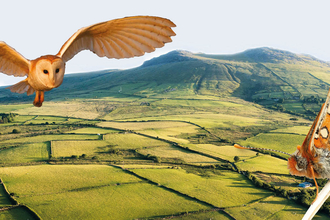Despite the endless days of rain, we seem to be having this year, Bryn Ifan has felt very bright! We have been working hard getting various projects underway and we’ve already had lots of visitors coming to see what we are up to, volunteers getting involved and on-going work by local contractors. It’s hard to believe that it is just over a year since we acquired this land amongst great excitement.
Bryn Ifan - One year on
Bryn Ifan © Gwynn Jones
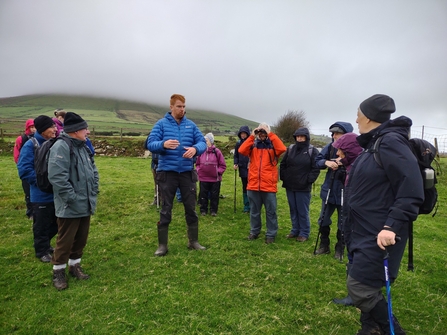
Dafydd Thomas Bryn Ifan Project Officer with members of Cymdeithas Edward Llwyd
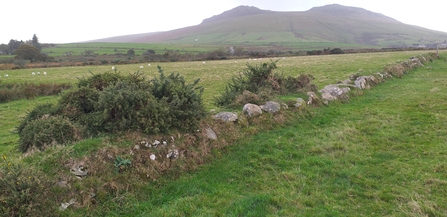
Bryn Ifan field boundary with views of Bwlch Mawr © NWWT Chris Wynne
A key area of work has been organising our planting plans on a hillside that is steeped in history and diverse habitats. Our plans will restore lost temperate rainforest; a habitat that has been largely destroyed over hundreds of years and now cover less than 1% of Britain. The restoration of this precious habitat is part of a wider programme of nature-based projects funded by Aviva to remove carbon from the atmosphere and to help nature recover. Our plans to restore woodlands, will enhance biodiversity create but also reflect the important local history such as the medieval farm settlement, the miles of ancient stone walls and the more recent history of mining.
As our plans for the woodland continue to develop we are working elsewhere on Bryn Ifan to restore biodiversity. On a damp February day, a group from Bangor University, along with NWWT staff and volunteers planted 2200 broadleaf saplings around the boundaries of some of the lower fields. These fields are very open to the harsh weather, and when the trees establish they will give much needed shelter and create a network of wildlife corridors.
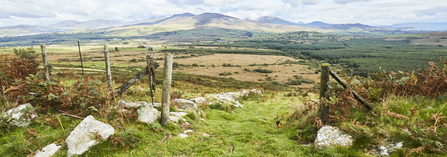
Cors y Wlad from the slopes of Bwlch Mawr © Gwynn Jones
Elsewhere on this large site, local contractors have been clearing areas of scrub and mowing on Cors y Wlad. This work is part of our ongoing programme to help restore the site and improve the habitat to benefit the marsh fritillary butterfly. Our longer-term aim is that carefully management of grazing will help provide better conditions for this rare butterfly and a range of other species.
Cors y Wlad is the perhaps best understood part of Bryn Ifan. As a Site of Special Scientific Interest and a key site for marsh fritillary and narrow-bordered bee hawk moth, there is a fair amount of information and knowledge about this area. We are working with Natural Resources Wales and the LIFEQuake project to better understand the hydrology of this wetland and will be coordinating survey efforts for the fritillary with Butterfly Conservation Wales.
We have also been adding to our knowledge through a series of surveys covering the 450 acre site. This will give us a baseline of data, creating a starting point to help shape and measure our management. There have been some very exciting finds – including a good-sized bat roost. And as the 2024 season progresses it will be great to see what migrants we get too!
We are also looking at new ways to gather information and have partnered with BIOSCAN on a 2-year DNA barcoding project that will be an extremely powerful means of baselining biodiversity data at Bryn Ifan and be an indicator that we are going in the right direction in sustainable farming, where nature is at the centre of our plans.
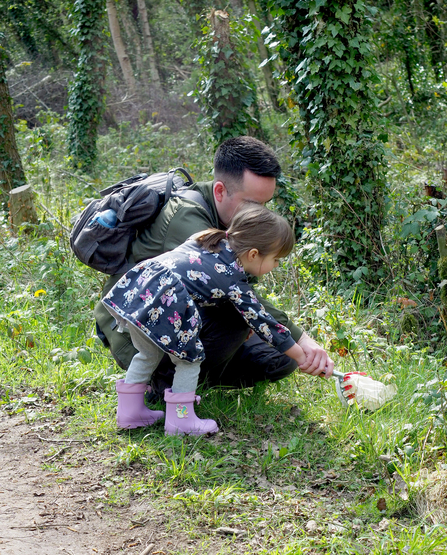
NWWT Lin Cummins
But we also want your help! And so we are holding a Wildlife Count at Bryn Ifan 18th of June. Iolo Williams will be on hand to bring his skills to helping provide insight into some of the wildlife we have at Bryn Ifan. Our local environmental records centre, Cofnod, will also be present for the day bringing specialist skills to help identify some of the more unusual species. The day-long event will be a great opportunity to explore the site, hear our vision and help develop the plans for the future.
But if you like to be more practical, we also need your help; so, keep an eye on our volunteering page for opportunities to get involved in everything from fencing and, hanging gates, to litter picking and clearing rubbish and creating a network of paths. And of course we will also be working to restore and enhance a wide range of habitats. So, do keep in touch!


